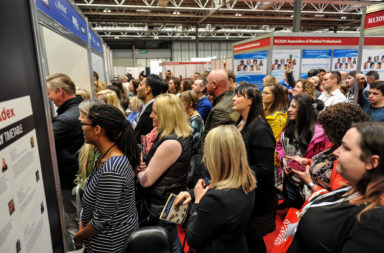Able Magazine gets plenty of letters and emails on the subject of travel. Amongst the most popular questions is: ‘Where’s the best destination for disabled people to take a holiday?’
This is quite a tricky question to tackle since the answer will depend largely on who’s asking. It’s doubtful that a teenager is going to want to take their first independent holiday in the same place as an elderly couple looking for a quiet getaway. To many people the word ‘destination’ means ‘place’ – city, town, resort or even country. Again, sorry, but whilst some are better than others, I’ve yet to hear of a geographical location that is completely built to the exact requirements of each and every disability. The fact is, the suitability of your holiday is going to rely a great deal on your specific design and decisions – how you get there, where you stay and what you do when you get there.
Having said all that – here are some of our favourite holiday suggestions:
Los Cristianos, Tenerife
The closest thing to an accessible resort town I know of, the port of Los Cristianos has been a favourite with disabled travellers since a Swedish tourist, Bengt Rylander, who had MS, started to tell people how well he was convalescing in the beautiful warm seaside climate. This was back in the 1950’s and the resort’s reputation has continued to grow as a place that readily accepts disabled tourists ever since.
The seafront and local shops, bars and restaurants are largely level and accessible and the promenade runs all the away along the beach as far as Playa Las Americas. The beach is also accessible with ramps down from the seafront and boards onto the sand and there are clean and pleasant changing facilities available. As you head into the town centre there is a slight incline and beyond that the hills and countryside become steeper.
A Cruise
Cruises are a good choice for a wide variety of people with varying interests. The idea is a simple one, in that the boat or ship moves from destination to destination, allowing you to disembark for a few hours to explore and then get back onboard and travel to the next port of call. These days, cruises can take you to just about any region you’d care to tour. The advantage for disabled people in particular, is that the usual rigours of travelling are somewhat lacking since many of the miles are undertaken in the evening or overnight when you’re likely to be enjoying onboard entertainment or sleeping. You’ll need to look at exactly where the ship docks in order to satisfy yourself that you’ll be able to access the area or take part in any activity or tour, but even if you stay onboard, there’s likely to be suitably relaxed activities or opportunities to sunbath in peace on deck.
Walt Disney World, Florida
The Disney Theme Park and Disney Resort in Florida have been favourite destinations for disabled people, especially children, for decades. Almost all of the Disney attractions, restaurants, shops and shows are accessible. (Some care needs to be taken regarding over-stimulation of people with sensitive needs such as those with autistic spectrum disorders.)
Not only are the parks very well laid out for wheelchair users and people with mobility impairments but guests with specific accommodation needs (due to a disability) are invited to make contact with the Disney Special Services department who will endeavour to make all of the necessary arrangements and ensure that guests have a safe, comfortable and convenient stay. There are plenty of options regarding disability friendly hotel rooms and even accessible transport for making your way around what is a huge resort.
Other features include designated rest areas for service animals and good numbers of companion-assisted restrooms.
www.disneyworld.disney.go.com
The Eden Project, Cornwall
There is some irony in creating an indoor ‘rain’ forest in a country that is perpetually at odds with it’s own climate of wind and downpours. Nevertheless, the Eden Project is a fascinating, beautiful, relaxing place and perfectly accessible for disabled people.
As well as being well laid out for wheelchair users, you can appreciate that the senses are well catered for with each exotic plant having a different fragrance and texture. Despite it’s name, actually, the Rainforest Diome, as it’s known, isn’t really wet at all, it’s more humid, meaning that even if it really is tipping down outside, you’ll be perfectly comfortable.
The Mediterranean Biome and the garden displays are also superb. ‘The Core’ is an area ideal for younger, inquisitive and playful minds, housing various interactive displays that encourage learning about complex topics such as conservation and ecology through simple play.
Check the Eden Project website to make your visit coincide with any number of art exhibitions, gigs and other activities and events going on throughout the year.
www.edenproject.com
RSPB Saltholme
Tees Valley
The wildlife reserve at Saltholme makes a superb day out. The indoor spaces and outdoor hides and trails are designed to be accessible.
The trails are surfaced in bound gravel to give grip but not to be obstructive and the majority of them are on level ground. Disabled people need only speak with volunteers and staff to help ascertain which of the trails fit in with what they want to see and do.
One of the newest and most exciting aspects of the reserve is the seal viewing point where around 80 common seals are known to congregate when the tide is right.
The reserve provides a superb day for people with sensory impairments since the sounds, smells and sights of the wildlife are incredible. Add to this Saltholme’s wildlife garden and you have a place where all disabled people can gently engage with nature.
www.rspb.org.uk/saltholme
The Deep
Hull
The Deep is an award winning visitor attraction. The aquarium is regarded as one of the finest in the world and currently displays over 3,500 fish including graceful rays and spectacular sharks.
Disabled people can borrow tactile and Braile copies of the visitor guide and staff can provide an opportunity for visitors to touch extra tactile exhibits. The aquarium displays a great deal of purely visual information for visitors with hearing impairments. In fact the aquarium regularly holds quiet days when the lights are turned up and the audio noise turned off.
The three levels are all accessible by wheelchair.
www.thedeep.co.uk
Cadbury World
Birmingham
Chocolate fans will already realise the significance of Bournville village, Birmingham, where the Cadbury story really started. The purpose built visitor centre is the only attraction of its kind in the UK devoted entirely to chocolate and is accessible for all.
Cadbury World tracks the history of chocolate from its mysterious Aztec roots right up to the zany business of packaging and advertising, with plenty of inventive interactive displays. Wheelchair users will appreciate the ramped access throughout the centre and be pleased to find that the Cadabra ride has a specially adapted car that can seat a wheelchair user and their companion.
Throughout the differently themed zones disabled people have the opportunity to touch and feel props to help with their understanding of the surrounds. There are also audio tours and subtitles on video installations.
www.cadburyworld.co.uk
Science Museum
London
The science Museum is one of London’s great museums, housing a world class collection of over 200,000 objects aimed at exploring and explaining the scientific world.
The museum wears its commitment to accessibility with pride. A large print accessibility map is available as are resources using Braile and Makaton sign language. As you’d expect, assistance dogs are always welcome and a number of wheelchairs are available for visitors to borrow.
The museum also holds special events and tours for deaf audiences as well as audio described events as well.
www.sciencemuseum.org.uk



